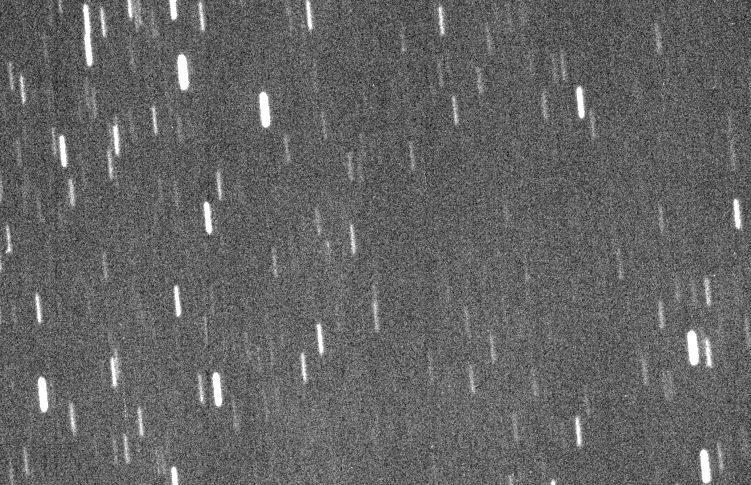Asteroid & Comet Watch.
12 February 2014
A team of European astronomers has found a previously unknown comet, detected as a tiny blob of light orbiting our Sun deep in the Solar System.
Europe’s Teide Observatory Tenerife Asteroid Survey team has been credited with discovering comet P/2014 C1, named ‘TOTAS’ in recognition of the teamwork involved in the find.
Comet P/2014 C1 seen from Argentina
The comet was unexpectedly discovered on 1 February during a routine set of observations using the 1 m-diameter telescope at ESA’s Optical Ground Station, Tenerife, Spain.
The confirmation was announced by the International Astronomical Union’s Minor Planet Center, the international clearing house for all such discoveries, on 4 February, after eight other observatories confirmed the sighting.
The tiny object is extremely faint, and its orbit was determined to lie between Jupiter and Mars – it will not come close to Earth.
Comet year
“All comets are interesting especially as they are thought to have played a role in bringing water to Earth in the distant past,” says Detlef Koschny, responsible for near-Earth object (NEO) activities at ESA’s Space Situational Awareness (SSA) programme office.
“Later this year, Rosetta will meet up with another comet, 67P/Churyumov–Gerasimenko, and study its nucleus and surrounding gas and dust, so it’s especially fitting that a European team has found a new comet this year.”
Orbit of comet P/2014 C1 TOTAS
This latest discovery was, in fact, made by software, which compares successive images to find ‘movers’ – objects that move against the star field background. The find was confirmed by Rafal Reszelewski, working as part of the team to verify possible new objects automatically flagged by the software.
Since 2010, the TOTAS team has been working in collaboration with ESA’s SSA office to conduct periodic sky surveys to find and confirm asteroids and other NEOs that orbit close to Earth. In 2011, it found asteroid 2011 SF108, which does orbit much closer to Earth.
Related links:
TOTAS sky survey: http://vmo.estec.esa.int/totas
About SSA: http://www.esa.int/Our_Activities/Operations/Space_Situational_Awareness/About_SSA
SSA Programme overview: http://www.esa.int/Our_Activities/Operations/Space_Situational_Awareness/SSA_Programme_overview
Near-Earth Objects - NEO Segment: http://www.esa.int/Our_Activities/Operations/Space_Situational_Awareness/Near-Earth_Objects_-_NEO_Segment
More information:
MPC - Minor Planet Center: http://minorplanetcenter.net/
About SSA-NEO Coordination Centre: http://www.esa.int/Our_Activities/Operations/Space_Situational_Awareness/About_SSA-NEO_Coordination_Centre
Images, Text, Credits: ESA / FRAM / GLORIA / Martin Masek / TOTAS.
Greetings, Orbiter.ch



